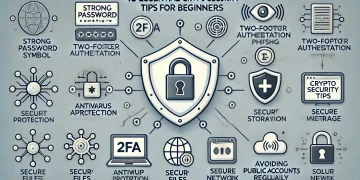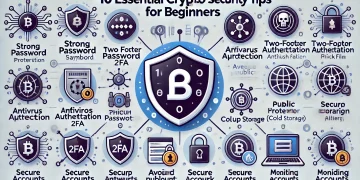The cryptocurrency industry faces an unprecedented wave of regulatory changes, making compliance a critical priority for businesses operating in this space. As digital assets become increasingly mainstream, understanding and adapting to evolving regulatory requirements has become essential for survival and growth in the crypto ecosystem. This comprehensive guide explores the key aspects of crypto compliance and strategies for staying ahead of regulatory changes.
Understanding the Current Regulatory Framework
The regulatory landscape for cryptocurrencies continues to evolve rapidly, with different jurisdictions taking varied approaches to oversight. Traditional financial regulations are being adapted and new frameworks are being developed to address the unique challenges posed by digital assets. This dynamic environment requires businesses to maintain a proactive stance in understanding and implementing compliance measures.
Financial institutions and crypto businesses must navigate a complex web of regulations, including securities laws, anti-money laundering (AML) requirements, and consumer protection measures. The challenge lies not only in complying with current regulations but also in anticipating and preparing for future regulatory changes that could impact operations.
Building a Robust Compliance Program
Establishing a comprehensive compliance program is fundamental for any cryptocurrency business. Such programs must be flexible enough to adapt to regulatory changes while maintaining operational efficiency. A well-structured compliance program begins with a clear understanding of regulatory requirements across all jurisdictions where the business operates.
The foundation of an effective compliance program includes risk assessment, policy development, and regular training for staff members. Organizations must invest in both human resources and technological solutions to ensure their compliance programs can scale with business growth while meeting increasingly complex regulatory requirements. This investment, while substantial, is crucial for long-term sustainability in the crypto space.
Technology and Compliance Solutions
Modern compliance challenges require modern solutions. Technology plays a crucial role in helping cryptocurrency businesses maintain regulatory compliance while operating efficiently. Advanced compliance tools, including blockchain analytics software, automated transaction monitoring systems, and identity verification platforms, have become essential components of crypto compliance infrastructure.
Artificial intelligence and machine learning technologies are increasingly being deployed to enhance compliance efforts. These tools can help identify suspicious patterns, automate routine compliance tasks, and provide real-time monitoring of transactions. The integration of these technologies allows businesses to maintain high compliance standards while managing operational costs effectively.
Risk Management Strategies
Effective risk management is integral to maintaining compliance in the cryptocurrency space. Organizations must develop comprehensive risk assessment frameworks that consider both traditional financial risks and crypto-specific challenges. This includes market risk, operational risk, cybersecurity risk, and regulatory risk.
Risk management strategies should be dynamic and regularly updated to reflect changes in the regulatory environment. Companies need to maintain robust documentation of their risk assessment processes and mitigation strategies. This documentation serves both as a compliance tool and as evidence of due diligence in case of regulatory scrutiny.
Global Compliance Considerations
Operating in multiple jurisdictions requires a thorough understanding of various regulatory frameworks and the ability to comply with different, sometimes conflicting, requirements. Cryptocurrency businesses must develop strategies for managing these complex international compliance obligations while maintaining operational efficiency.
International expansion requires careful consideration of local regulations and compliance requirements. Organizations must build relationships with local regulators and maintain open communication channels to stay informed about regulatory changes. This approach helps businesses adapt quickly to new requirements and maintain compliance across all operating jurisdictions.
Data Protection and Privacy Compliance
In the era of increased digital surveillance and data protection regulations, cryptocurrency businesses must balance compliance requirements with user privacy concerns. This includes implementing robust data protection measures while meeting regulatory requirements for transaction monitoring and reporting.
Organizations must ensure compliance with data protection regulations such as GDPR while maintaining effective AML and KYC procedures. This balance requires careful consideration of data collection, storage, and processing practices, as well as transparent communication with users about how their data is handled.
Staff Training and Development
Creating a culture of compliance requires ongoing training and development programs for staff at all levels. Employees must understand not only the technical aspects of compliance but also the importance of maintaining high compliance standards in their daily operations.
Regular training sessions should cover updates to regulatory requirements, internal policies and procedures, and best practices for maintaining compliance. This investment in human capital helps organizations build a strong compliance culture and reduces the risk of regulatory violations.
Compliance Documentation and Reporting
Maintaining comprehensive documentation of compliance procedures and activities is crucial for regulatory reporting and audits. Organizations must develop efficient systems for recording and retrieving compliance-related information, including transaction records, customer due diligence documents, and regulatory filings.
Regular internal audits help ensure compliance programs remain effective and identify areas for improvement. These audits should be documented thoroughly, with clear action plans for addressing any identified deficiencies. This documentation provides evidence of the organization’s commitment to compliance and helps demonstrate due diligence to regulators.
Future-Proofing Compliance Programs
As the regulatory landscape continues to evolve, organizations must develop strategies for future-proofing their compliance programs. This includes monitoring regulatory trends, participating in industry discussions, and maintaining flexibility in compliance systems to accommodate new requirements.
Investment in scalable compliance infrastructure helps organizations adapt to changing regulatory requirements without significant operational disruption. This forward-thinking approach enables businesses to maintain compliance while continuing to innovate and grow.
Frequently Asked Questions
What are the essential components of a crypto compliance program? A comprehensive crypto compliance program should include risk assessment frameworks, AML/KYC procedures, transaction monitoring systems, staff training programs, and documentation protocols. It should also incorporate regular audits and updates to reflect changing regulatory requirements.
How can cryptocurrency businesses stay updated on regulatory changes? Organizations can stay informed through multiple channels, including regulatory newsletters, industry associations, legal advisors, and direct communication with regulators. Regular participation in industry conferences and forums also helps stay current with regulatory developments.
What role does technology play in crypto compliance? Technology is crucial for maintaining effective compliance programs, providing automated transaction monitoring, identity verification, risk assessment, and reporting capabilities. Advanced technologies like AI and machine learning help enhance compliance effectiveness while managing costs.
How should organizations approach international compliance requirements? Businesses should develop a comprehensive understanding of regulations in each jurisdiction where they operate, maintain relationships with local regulators, and implement flexible compliance systems that can accommodate different regulatory requirements.
What are the key challenges in balancing privacy and compliance requirements? Organizations must navigate the complex balance between maintaining user privacy and meeting regulatory requirements for transparency and reporting. This includes implementing appropriate data protection measures while ensuring effective compliance monitoring.
Reference disclaimer: As my knowledge cutoff date is April 2024, compliance requirements and regulatory frameworks may have evolved. Readers should verify current requirements in their jurisdictions and consult with legal professionals for specific guidance.






























